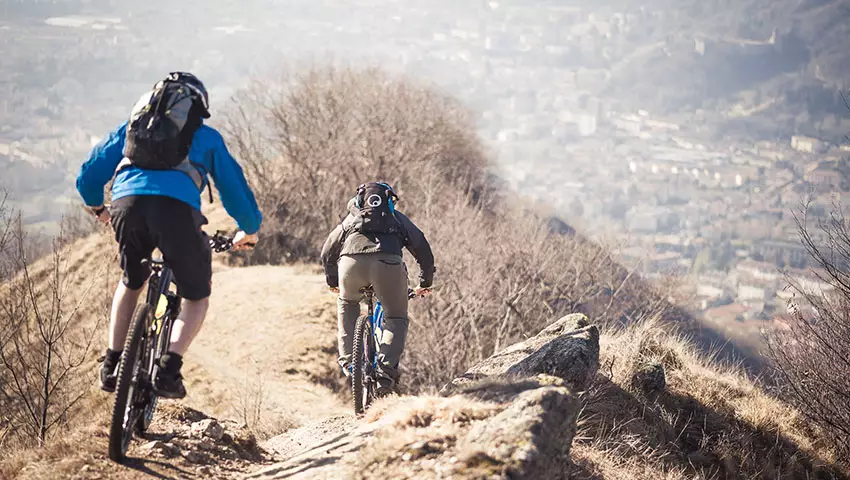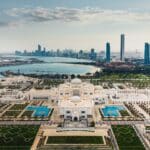Key Takeaways:
- Enduro Fitness Training programs tailored to the sport’s unique demands can lead to significant performance gains.
- Physical conditioning, nutrition, and recovery are crucial for enduring the high-intensity demands of Enduro MTB.
- Mental resilience and technical skills are vital for navigating challenging terrains.
- Community engagement and the appropriate use of technology can provide valuable support and enhancements in training.
The Evolution of Enduro Mountain Biking
The inception of Enduro mountain biking can be traced back to the desire for a more all-encompassing form of racing that embodied the whole spirit of off-road riding up the hills before racing down. This discipline has burgeoned from its grassroots origins into a popular segment of the cycling world, with a dedicated following and competitive scene. As the sport has matured, so has the complexity of the trails, ranging from alpine descents to technical forest paths. To meet these evolving challenges, programs like enduro fitness training have emerged, aiming to prepare riders for the intricate demands of modern tracks while fostering a passion for the sport’s boundless thrills.
The Importance of a Structured Training Program
Enduro fitness training requires a structured approach, not just a haphazard one. A systematic training schedule that’s been deliberately constructed offers a blueprint for success. It harmonizes exercise variety incorporating strength, endurance, and flexibility training with rest periods to forestall burnout. With the right balance, a structured program galvanizes a rider’s development, distinguishing between floundering on the trail and conquering it confidently. It also introduces riders to the rigorous discipline of mountain biking, ingraining practices that become second nature on race day.
Essential Skills for Conquering Challenging Terrain
The Enduro MTB training riders face a variety of challenging terrains full of obstacles that test their skills. Cornering with precision, lofting the front wheel over rocks and roots, and maintaining momentum through technical trail sections are fundamental skills that can vastly improve one’s efficiency and speed on the course. To master these techniques, riders must pair their physical training with practice on the trails, learning to interpret the landscape and respond instinctually to the shifting demands it imposes.
Physical Fitness: Building Stamina and Strength
Enduro MTB’s unique blend of high-intensity bursts with endurance segments requires a rider to cultivate a robust and versatile fitness level. This involves a dedicated focus on cardio training to build lung capacity and stave off fatigue during longer races, coupled with strength training to enhance bike handling and reduce the risk of injury. Core workouts, in particular, shore up the rider’s central stability, enabling better control and efficiency on the bike. Developing a tailored fitness regime that works harmoniously with Enduro MTB’s rigorous demands is pivotal in propelling a rider toward peak performance.
Nutrition and Recovery Strategies for Riders
Critical components of any elite athlete’s arsenal are rigorous training routines, strategic nutrition, and rest. Optimized intake of nutrients ensures that riders have the necessary fuel to sustain their performance and recover efficiently post-exercise. Carbohydrates, proteins, and healthy fats should be considered the foundational building blocks of a rider’s diet. Additionally, active recovery activities, such as yoga or light cycling, combined with ample sleep and hydration, aid in muscle repair and reduce downtime between training sessions.
Mental Toughness and Focus in Mountain Biking
The difficulties of mountain biking not only challenge the body but also the mind. Mental toughness, an often understated element, is paramount for riders facing the unpredictability of nature and the pressure of competition. The ability to persist when the body begs to quit and to remain calm when the trail turns treacherous are the hallmarks of a solid mental game in Enduro MTB. Resilience can be forged through visualization exercises, setting incremental goals, and developing a pre-ride routine that includes mental preparation, as much as a physical warm-up.
Integrating Technology in Training: Apps and Gadgets
Leveraging advancements in sports technology enables Enduro MTB riders to dissect and amplify their routines. The proliferation of mobile apps for training guidance and performance tracking offers riders the chance to receive instant feedback on their workouts. Wearable devices that monitor vital statistics and innovative bike components yield a comprehensive picture of the rider’s interaction with their machine. When parsed correctly, the data garnered from these technologies can unlock latent potential and catapult a rider from mediocre to exceptional.
Ensuring Safety on the Trails
By its nature, mountain biking is an extreme sport where the distinction between triumph and crash can take seconds. Safety gear such as helmets, gloves, and proper eyewear become non-negotiable armor in the face of inherent risk. These precautions can be life-saving with regular equipment checks and a robust understanding of trail etiquette and conditions. Additionally, acquiring first-aid knowledge and keeping emergency contacts and information accessible are wise measures every rider should prioritize.
Joining the Community: Finding Support And Motivation
The Enduro MTB community is a rich tapestry of knowledge, experience, and fellowship. Immersing oneself in this collective brings new insights and shared learning and forges friendships rooted in mutual respect for the trail. Local clubs and online forums provide invaluable moral support and the motivation that comes from belonging to a band of like-minded individuals.
Preparing for Enduro MTB Events and Competitions
The pinnacle of the Enduro MTB competitive spirit is embodied in race events that test every facet of a rider’s capability. Preparing these crucibles involves more than physical readiness; it also involves mental conditioning and meticulous logistics planning. Knowledge of the race course, weather conditions, and contingency plans for mechanical issues can be as crucial as training hours. Intimate familiarity with one’s equipment and fine-tuning it to racing conditions ensure the rider arrives at the starting line with every possible advantage at their disposal.













